Experiential Therapy
A Holistic Approach to Deeper Healing & Change
By Dr. Johnathon Neda, Orange County Experiential Psychologist in Costa Mesa-Newport Beach.
What is Experiential Psychotherapy about?
Guiding the client to make direct contact with and reach deeper into the immediate undercurrent of their subjective internal state (to the degree possible).

A Way of Introducing Yourself to Yourself
When clients come to see me for depth-oriented therapy, one of the primary activities made available to them (to potentiate growth) is the cultivation of awareness and genuine self-exploration. As a science of subjectivity, the purpose of this psychological application is to open the client to their experience in a broader way, which has more to do with widening and deepening understanding than trying to get a person to change anything.
Tailoring Therapeutic Strategy to Client Preferences
The degree of intensified exploration, however, will differ according to the client’s needs, preferences, and tolerable limits. Not everyone seeks psychological therapy with the goal of increasing self-awareness. Consequently, the integration of semi-experiential strategies or more programmatic and medically oriented approaches may be in order. Therefore, the opportunity for deeper self-reflection (when pertinent to the matter at hand) is not imposed but is an ongoing offer made available to the client.


Subjectivity and Pre-Schematized Experience
Drawing upon the power of our human faculties (e.g., affect, memory, perception, intuition, imagination, reason, and will), experiential self-exploration focuses on making explicitly known our subjective world of pre-schematized experience—the deeper layers of our personal experience that exists before we reflect upon and thereby formulate it. This exploratory approach pursues an understanding of one’s lived sense of being. In other words, it helps us apprehend our very personal way of organizing and framing the underlying structure of our experience.
Accessing Pre-Cognitive and Implicit Processes
Through efficient use of the clinical relationship clients are facilitated in their process of calling attention to, symbolizing, and depicting that, which is pre-cognitive and implicit. In doing so, the preverbal aspects of one’s experience become much more accessible to conscious awareness and therefore observable, informative, and useful. With good instruction, the cultivation of (pre-reflective) awareness is something that’s learned and developed in the process of psychotherapy.


Opening up to Areas of Experience Where Words Fall Short
Experiential awareness and understanding has to do with going to the inmost recesses of our heart and mind where words fall short while simultaneously attempting to describe the inexplicable. This paradoxical task involves entering into and sustaining a state of intense focus beyond ordinary attentiveness.
Throughout the process of experiential self-exploration, we cultivate wider awareness by bringing directed attention to the emotions, to the mind, and to the body.
Awareness is the ongoing knowingness of the mind-body.
Thinking vs Awareness
As the capacity to access our (larger) system of awareness develops and matures we may begin to act out of the intention of (embodied) awareness—not merely from the thought center of the brain. We often confuse and sometimes conflate thinking with awareness, but the neurocircuitry associated with each of them are not identical. Also, the mental processes involved are (neuroscientifically) different as each activates distinct regions of the brain.
Reclaiming greater access to the wider spectrum of our feelings, sensations, somatic perceptions, thoughts, intuitions, and imagination helps bring underdeveloped areas of awareness into a condition that can be used for many useful purposes. For example, absorbing more of our whole embodied awareness enhances our repertoire for problem solving and helps us engage optimal states across many domains of functioning.


Setting the Trajectory for a Positive Future
The idea here is that the more we come closer to (and integrated within) our fuller selves the more autonomy we gain. You’re autonomous when you endorse that which you are doing. Therefore, we become freer to willfully make (meaningful) choices that are in alignment with our core values. Values are those things in life that are very important to us and that we love.
Holding a larger perspective (by increasing awareness) reveals a fuller way to experience our selves, our relationships, and therefore, our existence. Utilizing a larger preference bandwidth of awareness enhances our psychological potential and ability to find more satisfying ways of living and relating to others—setting the trajectory for a positive future.
Gaining Fuller Access to our Non-Conscious Mind
As we learn to attend to all the subtle nuances of our internal state, we begin to occupy (and therefore operate out of) a wider system of knowing through direct experiential self-awareness. Calling our attention in this way also helps us to have fuller access to the non-conscious mind.
Through repetition, we bridge and re-bridge the gaps between experience and awareness until they increasingly become one and the same—facilitating an uninterrupted process of unbroken subjectivity. With fairly straightforward instruction and disciplined practice, this powerful form of knowing-through-being-aware is discovered and reinforced within the context of the clinical relationship. In time, this becomes a learned pathway.


Between Client and Therapist
As client and therapist enter into dialogue, the client’s level of self-understanding is broadened and deepened through the skilled use of their working relationship. In depth-oriented psychotherapy, we attempt to arrive at a collaborative understanding by attending (in real time) to what’s emerging in the ongoing moment-by-moment encounter. We attend to (and therapeutically reflect upon) whatever comes up within the client’s interiority but also to what arises within the mutual relational field (or in-betweenness) of the client-therapist dyad.
METHODS OF INVESTIGATING AWARENESS: ENGAGING IN PHENOMENOLOGICAL EXPLORATIONS OF THE ‘SELF’ TO PROMOTE EXPERIENTIAL UNDERSTANDING
The Tool of Phenomenology
In order to grasp the very personal meanings of how a given experience carries unique significance for a particular client, the tool of phenomenology is used. There are aspects of human experience that do not lend themselves well to quantitative methods of psychological assessment. As a qualitative method of psychological understanding, phenomenological therapies don’t revolve (or direct the client) around pre-determined paths. Instead, clients are facilitated to preside by their own narrative—staying closely with their experience as they elaborate on it from within their own frame of reference.


Subject-Object Distinction
We are often living life too fast if we aren’t taking it slow, to look closely—letting the words (gradually and at their own pace) emerge from our experience. The discipline of phenomenology seeks to illuminate the structures of human experience as it is actually lived through. Grounded in this approach is the assumption that consciousness constitutes reality and for every experience, within it, there is a subject and object. Derived from the Critique of Pure Reason, Kant distinguished that there’s a thing in itself and there’s an experience of it. In other words, we mediate the thing in itself in our mind. We can only know, that that’s how we experience [it]. Therefore, anything we count on as objective, is still subjective from a human point of view. Simply put, we are co-creating the reality around us.
What we perceive in the world depends on three different things: (1) what kind of organism you are, (2) your culture, and (3) individual experience.
Grasping Human Suffering and Pathology
In psychotherapy, phenomenologically based lines of inquiry seek to explore and describe the wide-ranging ways certain phenomena (e.g., anxiety, depression, trauma, relational disturbance, stress, struggle, loss) are experienced from the client’s subjective first-person point of view. In addition to figuring out how the client’s reality is colored by their cultural background, phenomenological methods elucidate the particular way a clients’ (personal) suffering colors their whole experiential way of living.
In a similar vein, experiential forms of self-contact are discovery-oriented methods intended to help you see more deeply and clearly into your actual subjective experience. Verbal brevity isn’t conducive to this process of self-exploration. Instead, being more descriptive about the inner-evidence of the mind-body is what helps stretch out awareness.


Pre-Reflective Experience and the Unthought-of-Thought
While objective awareness refers to an attempt to measure or quantify observable facts in the external world, the value of subjective awareness is found in casting light upon the latent and implicit meanings covertly held within lived-experience. The unthought-of-thought is the lived-experience. Such is the domain of pre-reflective experience—a subterranean dimension of our being that often resides beneath our conscious awareness.
As you learn to sensitize your self to the subtleties that transpire in your therapy, an awareness of the interrelated wholeness of your ongoing experience starts to gather into evolving gestalts.
Making the Unknown, Known
Cultivating awareness entails more than illuminating your personal and relational blind spots. It’s also about understanding with one another and opening doors to different and fresh perceptions. This is a major part of the discovery process—of making the unknown, known.
Because we are often non-transparent to ourselves, it can take a sensitively attuned facilitator (who is in a caring position) to help guide attention toward experience-near material that seems salient during a therapy session. In tracing this process out across time we call attention to the core elements that seem to come out in the client’s descriptions. We look at the appearance of prominent themes but also to what’s missing and isn’t presented.


Embodied Awareness
Experiential learning involves developing one’s capacity to make focused contact with (the immediacy of) what seems to be suddenly emerging in the therapeutic moment. As one stays more closely with one’s experience and puts effort in engaging all the subtle details, one notices much more. Focused attention is directed at preverbal or pre-reflective experience, which points to a deeper level of psychophysiological awareness. Learning to tap into this internal undercurrent of data can inform your awareness in a way that makes your everyday experience much more meaningful, rich, and full.
THE ROLE OF EMOTIONS: STAYING ‘WITH’ FEELINGS AND OPENING UP TO WHAT THEY POINT TOWARDS
Cognitive Insight vs Connecting to Your Vast Inner-Space
There is a distinction between the inner-vision obtained by embodied awareness versus the more formulaic forms of (cognitive) insight. In comparison to emotional or experiential understanding, intellectual understanding (or insight) just touches the surface of one’s complex and rarely penetrates beyond that. While it is important to synthesize a cognitive understanding of the relationship between thoughts, feelings, and behavior, we can run into problems when trying to apply a thinking solution to an emotional problem. This is why it is important to be able to really work on an emotional level.


Discovering the Evolving Nature of Emotion
Experiential learning deals with an individual’s internal emotional life and therefore emphasizes the capacity to stay present at a feeling level. Again, even though understanding your struggle at a cognitive or intellectual level may be necessary, it is not sufficient for deeper healing or change to occur. Rather, what’s often essential is a tussling with your issues experientially by staying with it long enough to discern its evolving nature—discovering all the different facets and contours of your particular struggle, in context, as it unfolds.
Working Holistically
This type of (experiential) learning occupies the attention of the totality of your entire being (not just your intellect) and is taught in a way that engages you personally. When working at this (holistic) level, I have in mind for my client that they learn to experience their self, themselves (in an experiential way), which extends far down from the surface. This pathway leads to a deeper source of learning and to a knowing that feels more sure or certain.
Again, what’s often crucial is bringing a client into contact with their pre-reflective dimension of self-awareness. Getting in touch with this pre-conscious realm can motivate one to make the implicit, explicit. The invisible can be such a powerful force in our lives. By increasing receptivity to one’s (as of yet) contained experiential awareness, its fuller expression allows it to take on additional meaning.


Metacognition
Making contact with this deeper level of our experience often requires adequate introspection and metacognitive skills. These abilities help us to detect and subsequently work with the immediacy of mental content as it arises in real-time. Working at this experience-near zone can serve as the entry point or special portal that grants clients’ access to a wider bandwidth of themselves (by connecting them directly to the undercurrent of their lived-experience).
The Subtle Dance Between Verbal and Nonverbal Behaviors
Again, within the safety of the clinical relationship, clients are offered the opportunity to actually open up to and fully experience their complex struggle as it unfolds in the therapy setting. In doing so, their experience is held and supported as it can be challenging to remain presently available to one’s ongoing experience. This is facilitated to the point where the client can further elaborate and attempt to word what they discover in the process.
Attunement is key to tracing out the course of this process, which requires deep listening (and disciplined attention) as the therapist accurately reflects back what the client is subtly showing. Emphasis is placed on emotional displays and particularly in recognizing the subtle dance between clients’ verbal and nonverbal behaviors.


Shrinking the World Down to a Manageable Size
From these reflections, we draw inferences about a given client’s way of being-in-the-world. This is carried out in order to make apparent any (tacit) life-limiting postures maintained by the client—the restrictive patterns or defense mechanisms that hinder a clients’ capacity to break out of the stifling molds that constrict their sense of available options.
Our psychological defenses, however, float us through the emotional swamp. In the face of fear and in the midst of great unknowns, we sometimes revert to an old (familiar) position or life stance, which may have kept our world stable at an earlier period of life. And, while we all tend to shrink the world down to a size or proportion that feels manageable or safe, repeating old patterns in this way isn’t always up-to-date and may not continue to serve or protect us. This is often exemplified by those of us whose cognitive processes are (psychologically) channel-locked by the ways in which we anticipate events. In other words, the way we anticipate how events unfold in the future is the way in which we behave for these events to unfold.
What’s Obvious Often Alludes Us
We engage in the abovementioned reflective (mirroring) process in order to gradually bring into the light of day, the actual but obscure interior world contained inside you. Its hidden in plain view because we usually look past it or through it in some way or another. For each human life there is a story to be told—and the story of their life dwells within them as they (simultaneously) reside within their story. It’s the familiar and seemingly obvious that often alludes us in life; what’s open to plain view or exposed to sight is not always readily noticed and can often be what we see last.
It’s not always easy to step back and get a total felt sense of one’s place in the broader scheme of things—to have (on-line) a global perspective of the wider (bio psychosocial-spiritual-cultural) framework one is historically situated in. Just like a body of water that surrounds a fish and makes up its world, the human mind is embedded in yet filters the subjective experience of the I. In other words, we are susceptible to being unaware of the overarching (personal) contexts we are encapsulated in.

THERE’S PROBLEM TALK AND THERE’S SOLUTION TALK

Psychological Defenses and Overcoming the Blocks to Personal Fulfillment
To get to the distilled essence of what is really going on for a person and identify what they’re up against, a double vision is often required. Whereby, equal attention is paid to the strangulating aspects of their personal challenges but also attending to what’s attempting to loosen the tightness of those issues—both. It’s about navigating and finding your way between a self-defeating posture (e.g., repeating old patterns) and a simultaneous desire to overcome the blocks to your fulfillment.
Empathic Reflections
At its more developed stages, this process of experiential self-exploration can really assist clients in fully grasping what they are seeking and what’s getting in the way of what they are seeking. This approach to cultivating self-understanding is geared towards elucidating and echoing back to clients the implicitly held and unarticulated aspects of lived-experience associated with their painful predicament.


Articulating Personal Truths
Therapeutically mirroring back to clients the facets of their inner experience (that seems linked to the prominent themes arising) is what carries out this method. Ultimately, clients are the arbiters of their personal truths and sole determiners of what’s meaningful in their discoveries. As clients make their lived-experience more vivid, their pre-reflective awareness comes back on-line—more readily available and fully conscious.
Consolidation of Deep Learning
Again, whole-bodied presence to your struggle is key here because if you just think about your psychological pain and challenges (cognitively) without processing your sensory-based experience (personally and holistically), then it will just get filed away. What’s unique to an experiential style of learning is that it’s a way of knowing that extends beyond cognition.


From Thinking to Presence
The shift is from thinking to being present, which is a way of being that can take you the deepest into unknown territory. Setting the intention to step outside of thinking and surrender to a more tacit form of knowing (that comes spontaneously) can often bring to mind a poignant field of awareness. Such awareness can often represent more of the multifaceted nature of your presenting concerns and issues of importance.
Thinking can Slow Down the Speed of Awareness
With adequate training and practice, the speed of (comprehensive) awareness grasps one’s internal state or total felt sense faster than what can be captured by thought. Furthermore, drawing from one’s global sense of awareness can even facilitate peak performance functioning. To further illustrate this distinction between (large scope) awareness versus operating out of the thought center of the brain consider the precision and elegance of a high-speed performance executed by an Olympic gymnast. The sport relies heavily upon the ability to skillfully act out of a whole embodied awareness—thinking isn’t required and can often get in the way. Part of the distinction made here also speaks to the difference between what you know cognitively and what you know viscerally—as reflected in bodily awareness.

THE ASSOCIATIVE-DESCRIPTIVE PROCESS: TAKING INTO ACCOUNT ASPECTS OF INTELLIGENCE THAT ARE OTHER THAN CONSCIOUS

Adopting an Attitude of Unknowing Curiosity
Experiential understanding often begins by learning to connect to the immediate sensing of what’s bubbling up. Exploring inner experience in this way involves paying attention to an experience from inside, as opposed to reporting about it as if you were outside of it. Adopting a naive attitude of unknowing curiosity is key to learning how to explore our embodied experience. In doing so, we remain available and intensely present to the entirety of our whole bodily being. As we slow down and become increasingly in touch with our inner depth, a felt sense begins to form.
Less Filtered Forms of Consciousness
Radiating throughout the body, the complex system of awareness resident within us can represent a purer or less filtered form of consciousness. These raw, body-based sensations often have important significance—especially when they are indicative of one’s whole personhood reacting to the predicament at hand.
The entire gestalt of the human being (with all its faculties and resources) signifies our unified whole bodily being—a hybrid organism that we can draw upon in order to intensify our knowing awareness.


What Reveals Often Conceals and Vice Versa
Now, when a person is deeply present to their main struggle, the corresponding associations that arise are often helpful cues that keenly alert one to what is strikingly relevant. Clients are encouraged to notice the torrent of associations that come up within their stream of consciousness and discern how those might be interconnected to each other. Based on the assumption of an unconscious intelligence, the mind selects a plethora of signifiers that portend a network of meaning. The clients’ mind (unconsciously and consciously) selects signifiers of meaning that they’re trying to communicate but also disguise.
In this paradoxical interplay, clients are encouraged to notice what they become aware of by taking stock of any sensory experience that arises. For example, any visceral perceptions/charged bodily sensations, the chain of imagery/memories that appear, and sequences of thoughts that comes to mind.
Bridging Bottom-Up and Top-Down Information Processing
This method of paying attention rests on the further assumption that truth can come from one’s senses (physiological reactions) and perception (what you make of it or how you organize it). Perception is what appears to me; Apperception is what it means to me. Sensation and perception are intimately related and we often construct complex ideas based upon these impressions. In other words, simple impressions build up into ideas, are associated together, are retained in our memories, and this is how we learn.
Drawing upon this associative-descriptive process helps us gain further access into other ways in which the human organism can know things. This neuroscientific understanding of human functioning speaks to the bidirectional influences between physical and mental domains—supporting the assumption of the mind-body connection as one seamless and inseparable network. The mind-body connection is key to understanding and enhancing the implicit level of human functioning because it involves the successful integration of bottom-up and top-down processing of information—both.

OBSTACLES TO CONDUCTING DEPTH PSYCHOTHERAPY

Talking Out of vs Talking About One’s Self
Not infrequently, roadblocks arise that prevent deeper self-contact from occurring. For instance, it’s quite typical in therapy for a client to fall back into the conventional habit of reporting about oneself instead of out of oneself, which circumvents the deepening process. It’s not uncommon for clients to step into the role of a distant narrator of their actual experience; this stands in contrast to actively participating in the act of describing. These types of alienated reports are not conducive to conducting experiential self-exploration.
Avoiding Explanations, Interpretations, and Speculations
In order to get to the bigger picture of what’s (actually but unnoticeably) going on for a client, it often takes working closely with what is charged and alive within the therapy session and not far beyond that. The past flows into the present and working in the here-and-now (instead of the then-and-there) is what brings an intensified contact with one’s predicament to life. It does so in a way that reaches beyond the narrow explanatory reflections of one’s past history. The communicative activity involved in self-discovery is about staying with your sensory-based experience while and attempting to describe it. Emphasis is placed on extending deeper into your inner world before attempting to explain, interpret or speculate about it.

UTILIZING IMPLICIT KNOWLEDGE AND CULTIVATING INNER VISION

The Relational Encounter and Experiential Feedback
As an existential depth psychologist, special importance is laid upon the relational encounter and truly entering into dialogue. Regardless of whatever I may learn about you from taking a thorough history, I don’t know you the way you know you—and in my clinical practice, I trust that clients know more than they know they know. In other words, the human organism has resources of mind that are other than conscious. The clients’ latent knowledge is brought to the surface and sharpened by offering them [experiential] feedback in the form of a successive set of coordinated therapeutic reflections or mirroring.
Training Attention Through Concentration
In therapy, we will preside by the birth of your latent capacities. As you help me understand ‘what’ your experience is and then ‘how’ you experience it, I will select various methods to illuminate the not-yet labeled aspects of your experience. Again, one such method is drawing attention to nonverbally performed exchanges (i.e., affective leaks) in a way that mirrors back to clients what they are implicitly communicating at an emotional level. These mircoexpressions can develop into a kind of psychic x-ray that clients don’t even know they’re revealing.
In particular, I might reflect back a sample of the client’s subterranean emotion. This material is latent because it is present but not visibly apparent to the client. It is unacknowledged as it hasn’t yet become recognized and integrated as part of one’s larger whole of conscious awareness. Training attention through concentrating on the mind-body in this (reflective) way helps clients to deepen their awareness of what is actual but not identified.


Embodied Level of Self-Exploration vs Cognitive Forms of Insight
Once that deeper level of inner contact is made, it’s often vital to abide within your whole-bodily being…to stick around a while, remain open to the discovery that can occur, and to see what other clues help us to find. Again, this embodied level of self-exploration helps you to see in a deeper way than what can be speculated by cognitive forms of insight. This is because the process of indwelling helps cultivate an inner-vision whereby you actually inhabit your sense of possibility.
THE LIMITS OF LANGUAGE
What is Known but Cannot be Told
The pre-verbal and body-based domains of experiential self-awareness are windows into different ways of perceiving and (when cultivated) often reflect the deepest forms of knowing. Locating and gaining access to this interior territory is not easy but the key lies in utilizing tacit knowledge. This area of implicit knowing is often contained beyond the bounds of language, outside the reach of the limited structures of our mind. Because we are relaxing the associative link between knowledge and language, it can be challenging to articulate such material in a straightforward way. Pre-narrative experience is not something that’s subject to facile interpretation. This is because what is known but cannot be told is by definition not capable of being easily articulated by verbal means.


Language can Contaminate What’s Real
In other words, this level of deep experiencing can’t be merely discussed verbally. One needs to make an attempt to have it gradually digested and absorbed within one’s whole organism. This is because experiential focusing seems to run contrary to articulating experience through words, which can often dilute what is. Sometimes, the wisest option is to simply take a mental snapshot or note of what you’re aware of rather than being compelled to pre-maturely word your experience. This is because when you name something too soon you really stop experiencing it fully. We need to hesitate to name our experience too quickly and thereby impose premature meaning on it and fail to learn from it. And sometimes, describing the thing actually creates the thing. At any rate, language can contaminate the real.
Touching That Which Transcends Thought
There’s a purity of experience that we start to lose when we try to wrap words around things. And when you don’t use language, you meet it more purely—It’s a weird tug and pull. Ironically, the most meaningful experiences in therapy often occur when something that hadn’t been articulated is suddenly put into words—it’s physiological, emotional, intellectual, and cultural—all at the same time. This thing I’ve been experiencing all alone…to put that into words, is very meaningful. But, it’s killing the real all at the same time. The real transcends thought and is what language can’t touch; we literally can’t talk about it, we can only infer it.


Not Knowing What to Say
Sometimes, therapy doesn’t really begin until the client doesn’t know what to say. Because what this implies is that they are not even aware of [it], they have no conscious access to [it]. Everything else they report about is material they’ve probably put some thought into already. But the thing they have no access to (yet profoundly impacts them) remains outside of the grasp of their understanding—and within the analytic space of the therapy setting they might mention that fact, perhaps for the first time.
Personal Complex
Whatever our personal complex is, it often takes time to announce itself and to form its full expression. It also takes time to reclaim a sense of internal wholeness or inner cohesion by rediscovering the parts of one’s self that have been undeveloped, forgotten, faded away, or shunned. The paradox of experiential self-exploration is that one comprehends one’s self in order not to be preoccupied with one’s self.

CLINICAL IMPLICATIONS OF THIS EXPERIENTIAL APPROACH

Panoramic Lens of Awareness
Experiential therapies help individuals operate out of a panoramic lens of awareness (instead of merely operating out of thought). This global form of awareness often helps clients deeply realize how to overcome their struggle with a given issue of importance.
Experiential learning can be pivotal in promoting a stable sense of internal freedom (in light of and sometimes in spite of adverse external circumstances). It can help clients find a way to transcend a stagnant situation—where one’s predicament or dilemma persists and is relatively intractable or impervious to change.
Cultivating Positive Emotional States
Utilizing an experiential mode of therapeutic work facilitates the deepening of already known material. However, to bring out the possibilities that experiential levels of contact can bring into being, it is helpful to develop epistemic trust in the existence of pre-linguistic forms of knowledge and awareness. Non-conceptual forms of knowing encompass a wide web of information, which we can consolidate.
What’s important about this approach to therapeutic healing and change is that it doesn’t just focus on the removal of deficits or symptoms. It’s a therapy geared towards actively cultivating positive emotional states of mind. For instance, it can help transform negative feelings or at least lessen the sense of being embedded in one’s pain and suffering. It can alchemize trauma into triumph.


Positive Implications for Mental Health
Overall, the process of extending and deepening our awareness has important implications for mental health. It has the potential to revitalize our life and evoke our character. This is because experiential focusing can contribute to the client’s formation or discovery of personal and psychological meaning. These emergent meanings are pre-theoretical and are not born out of explicit conceptual explanations or intellectual interpretations. This is because experiential meanings transcend the internal representations of thought. Therefore, invigorated functioning is more deeply realized by a unified, whole body experience of personal and psychological meaning. This sense of renewal is marked by an experience of being revitalized—a feeling of being more fully alive.

